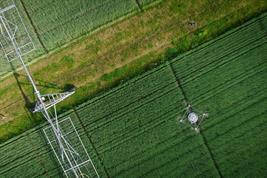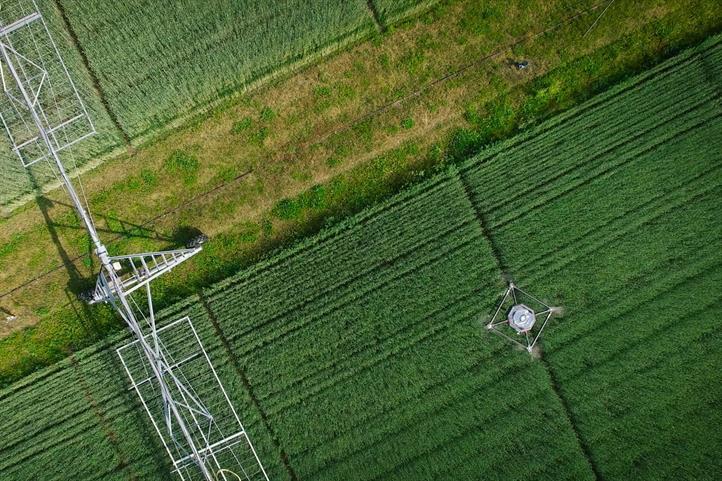03.05.2019
Press Release

The project “Agricultural System of the Future: DAKIS – Digital Agricultural Knowledge and Information System” coordinated by the Leibniz Centre for Agricultural Landscape Research (ZALF) was launched in April. Together with nine other research institutions, the researchers are working on a vision of the digital agriculture of tomorrow. A digital decision-making system for practical use will deploy robotics, sensors and computer models to make crop farming systems more economically efficient and at the same time more environmentally sustainable. The Federal Ministry of Education and Research (BMBF) is providing a total of EUR 7.4 million over a period of five years.
Global agriculture is facing major challenges. The world’s population is growing – to over nine billion people by 2050. While available farmland is declining worldwide, particularly due to erosion, desiccation and flooding, climate change is increasing the risk of crop failures caused by extreme weather conditions. Much more will therefore have to be harvested on less fertile soil in the future. At the same time, the use of fertilizers, chemical pesticides, water and energy must be reduced in order to save resources and reduce the environmental impact. How can agriculture meet these challenges, i.e. become more efficient, more sustainable and more adaptable to climate change all at the same time?
“In order to produce more food in the long term, we have to strike a balance between intensifying production on the one hand and sustainability aspects on the other”, says
Prof. Bellingrath-Kimura, head of the project and agronomist at ZALF. “Digitization now gives us the tools to shape this middle ground.” In the DAKIS project, the researchers want to develop an information and management system that is so far unique throughout the world, and which combines the optimization of production with environmental and nature conservation requirements in new crop farming systems.
“With the DAKIS system, the agriculture of the future becomes reality”, says
Prof. Bellingrath-Kimura. “We are addressing the solutions to the major challenges facing agriculture: climate change, food security and sustainability, for the first time in a holistic, digital information and decision support system, which combines real-time data with simulation, social requirements and economic factors.”
North and South Germany: two types of agriculture as test regions
The application is to be developed and tested in two very different agricultural test regions, in Passau in Bavaria and in the Uckermark in Brandenburg. While the Uckermark is characterized by low annual precipitation and a large-scale agricultural landscape on soils with average yield potential, the district of Passau has significantly higher annual precipitation and soils with high yield potential in a very small-scale agricultural landscape.
First of all, a status quo of the two regions will be established: What services are currently provided by agriculture, i.e. how much food is produced for humans and animals, how many renewable raw materials are produced? What regulatory services are available, such as floodplains, carbon dioxide release and storage capacities, or the pollination performance of crop plants? Which animal and plant species live in the regions and under what conditions? Finally, cultural aspects will also be covered, such as the recreational function, environmental education and tourist aspects of agricultural landscapes. Of great importance for the later DAKIS system: What effects do cultivation measures have on species diversity and the ecosystem services mentioned above, i.e. services provided by the landscape for the benefit of society?
In the next step, the researchers will determine the regional demand for these ecosystem services in society. From the findings they will then derive how a central management and information system can translate this demand into concrete land use strategies and agricultural recommendations for action. These are the demands placed on agriculture.
The networked agricultural landscape: sensor technology and real-time monitoring
A wireless sensor network comprising static sensors and partially autonomous robots will be set up at the same time in both test regions. The system continuously records important landscape parameters, such as soil composition, plant population or meteorological data, and links these to satellite-based observation. In this way, changes in the landscape can be continuously monitored and fed back into the decision-making system.
The ideal farm: from computer model to reality
With the help of this data as well as the social demands placed upon agriculture, computer models calculate the “ideal farm” adapted to the region, which perfectly balances the relationship between production maximization, ecosystem services and technical feasibility. The models take economic factors into account: DAKIS is also intended to support, for example, the planning of long-term investments, such as the purchase of irrigation systems or agricultural machinery. At the same time, the cropping systems are examined for their economic efficiency, for example with regard to weather conditions. The use of resources such as water, fertilizers and pesticides is reduced to a minimum.
Also, the system should make small-scale cultivation, so-called spot farming cultivation, possible. With this shift in the cultivation system away from increasingly large fields with monocultures and heavy agricultural machinery towards smaller and more diverse field units, two significant developments could be countered: the decline in the biodiversity of agricultural landscapes and the very limited cultivation portfolio leading to the extinction of certain crops. Cross-farm networking in agriculture using DAKIS will also create new opportunities for cooperation and the division of labor.
Ultimately, the system should be able to simulate both agricultural yields and ecosystem services in real time.
DAKIS in action
The results from the monitoring system and the simulations are linked in the DAKIS interface with legal, political and social parameters. Agricultural knowledge is also stored as a building block in the DAKIS decision-support system. All the data streams are brought together on an intuitive user interface, condensed into recommendations for action and visualized in a way that is easily comprehensible for practical use. This will then be tested and further developed in both test regions with a focus on two typical types of use, grassland and arable land. From the outset, the researchers will also be investigating how the measures can be implemented using innovative technology, such as robotics, and how potential acceptance barriers can be overcome in practice.
You will find an article on the DAKIS project and infographics in the current issue of the ZALF research magazine FELD “The Digital Agriculture of the Future”:
www.zalf.de/feld
Project Partners:
- Leibniz Centre for Agricultural Landscape Research (ZALF)
- Innovations for High Performance Microelectronics (IHP)
- Eberswalde University for Sustainable Development (HNEE)
- European University Viadrina Frankfurt (Oder)
- Leibniz Institute for Agricultural Engineering and Bioeconomy (ATB)
- University of Bonn
- Forschungszentrum Jülich
- German Research Center for Artificial Intelligence (DFKI)
- Osnabrück University of Applied Sciences
- Fraunhofer Institute for Systems and Innovation Research (ISI)
 Press Release as PDF
Press Release as PDF
Pictures
For downloading the pictures please click on a picture and use the icon.


A drone flies over the ZALF test areas. | Source: © Jarno Müller / ZALF.
